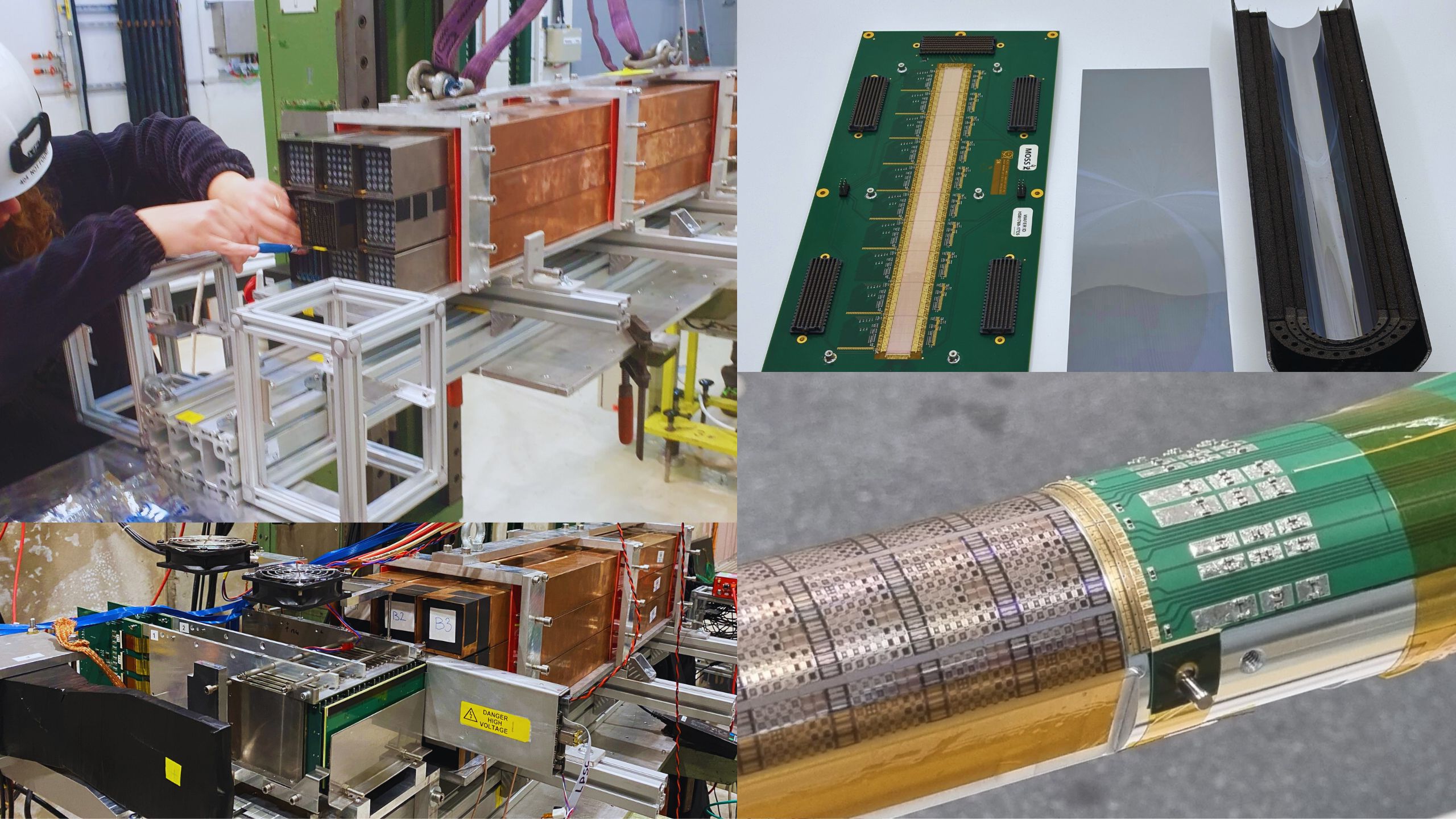
ALICE's new subdetectors, Forward Calorimeter (left) and components of the Inner Tracking System 3 (right) (Image: ALICE Collaboration)
Two detector upgrades of ALICE, the dedicated heavy-ion physics experiment at the Large Hadron Collider (LHC), have recently been approved for installation during the next long shutdown of the LHC, which will take place from 2026 to 2028. The first one is an upgrade of the innermost three layers of the Inner Tracking System (ITS3), and the second is a new forward calorimeter (FoCal), optimised for photon detection in the forward direction of the ALICE detector.
High-energy collisions of heavy ions like lead nuclei at the LHC recreate quark-gluon plasma: the hottest and densest fluid ever studied in a laboratory. Besides studying the properties of quark-gluon plasma, the ALICE programme covers a broad array of topics involving strong interaction, such as determining the structure of nuclei and the interactions between unstable particles, as presented in "A journey through the quark-gluon plasma and beyond".
Inner Tracking System (ITS3)
ALICE's current Inner Tracking System, installed for the ongoing LHC run, is the world's largest pixel detector to date, with 10 m2 of active silicon area and nearly 13 billion pixels. The new Inner Tracking System, ITS3, builds on the successful use of monolithic active pixel sensors and takes this concept to the next level.
"ALICE is like a high-resolution camera, capturing intricate details of particle interactions. ITS3 is all set to boost the pointing resolution of the tracks by a factor of 2 compared to the current ITS detector," said Alex Kluge and Magnus Mager, the project leaders of ITS3. "This will strongly enhance the measurements of thermal radiation emitted by the quark-gluon plasma and provide insights into the interactions of charm and beauty quarks when they propagate through the plasma."
The ITS3 sensors are 50 µm thick and as large as 26×10 cm2. To achieve this, a novel stitching technology was used to connect individual sensors together into a large structure. These sensors can now be bent around the beampipe in a truly cylindrical shape. The first layer will be placed only 2 mm from the beampipe and 19 mm from the interaction point. It can now be cooled by air instead of water and has a much lighter support structure, significantly reducing the materials and their effect on the particle trajectories seen in the detector.
Forward Calorimeter (FoCal)
The FoCal detector consists of an electromagnetic calorimeter (FoCal-E) and a hadronic calorimeter (FoCal-H). FoCal-E is a highly granular calorimeter composed of 18 layers of silicon pad sensors, each as small as 1×1 cm2, and two additional special layers with pixels of 30×30 μm2. FoCal-H is made of copper capillar tubes and scintillating fibres.
"By measuring inclusive photons and their correlations with neutral mesons, and the production of jets and charmonia, FoCal offers a unique possibility for a systematic exploration of QCD at small Bjorken-x. FoCal extends the scope of ALICE by adding new capabilities to explore the small-x parton structure of nucleons and nuclei," said Constantin Loizides, project leader of FoCal at the ALICE collaboration.
The newly built FoCal prototypes have recently been tested with beams in the CERN accelerator complex, at the Proton Synchrotron and Super Proton Synchrotron, demonstrating their performance in line with expectations from detector simulations.
The ITS3 and FoCal projects have reached the important milestone of completing their Technical Design Reports, which were endorsed by the CERN review committees in March 2024. The construction phase of ITS3 and FoCal starts now, with the detectors due to be installed in early 2028 in order to be ready for data taking in 2029.






